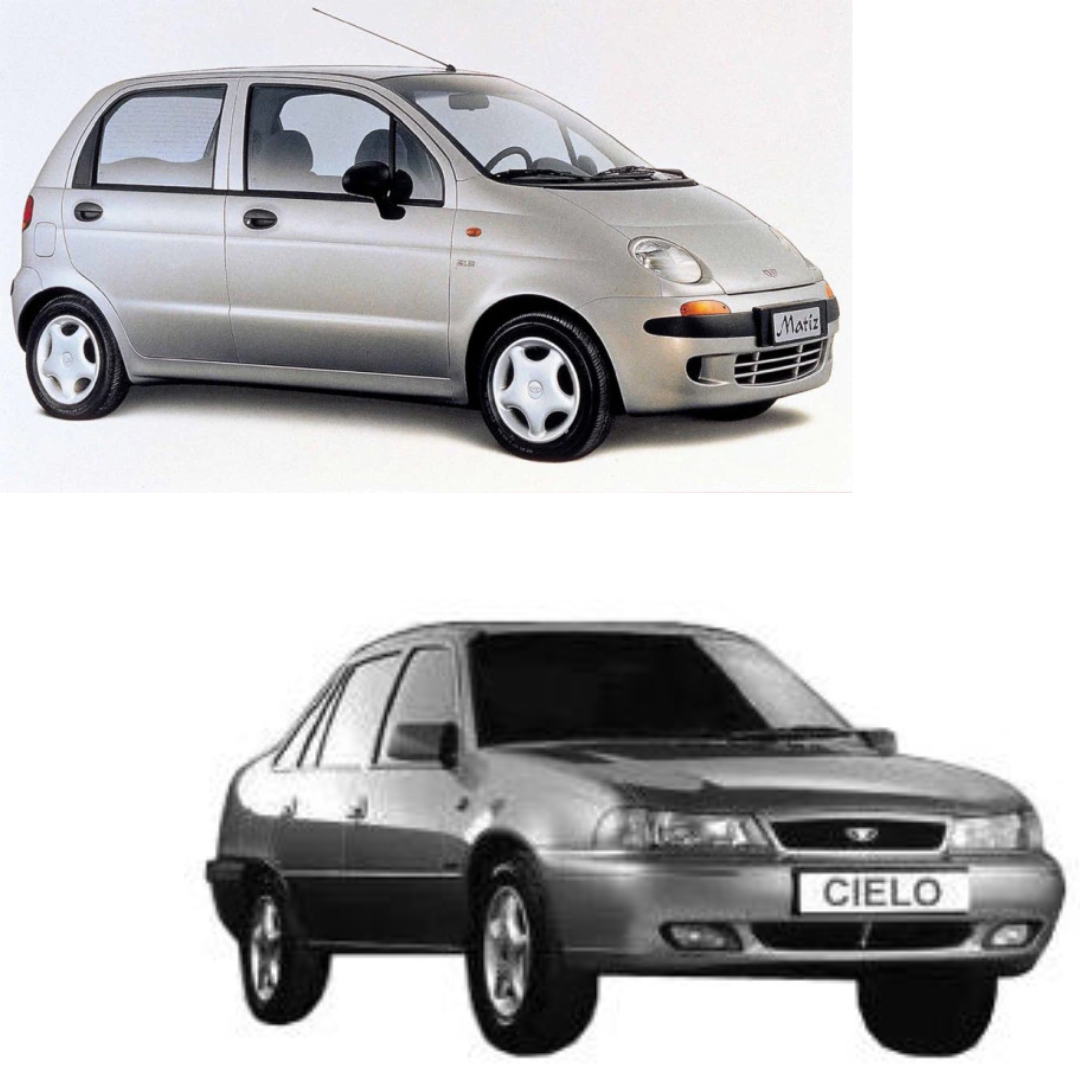The Indian automotive market has witnessed significant changes over the years, with various car companies entering and exiting the scene. In this blog post, we will explore the departure of car companies from the Indian market since 2000. From global giants to niche players, these companies faced various challenges that ultimately led to their exit. Join us as we delve into the reasons behind their departure and the impact it had on the Indian automotive landscape.
Table of Contents
Car companies that left the Indian market
General Motors (GM)

General Motors (GM), one of the world’s largest automobile manufacturers, made its foray into the Indian market in 1996 with great ambitions. With a lineup of popular models like the Chevrolet Optra, Tavera, and Cruze, GM aimed to capture a significant share of the growing Indian automotive industry. However, after more than two decades of operation, the company decided to exit the Indian market in 2017, leaving behind a void in the industry.
GM’s journey in India was a mix of successes and challenges. In the early years, the company enjoyed some popularity, thanks to its range of affordable and feature-rich vehicles. The Chevrolet brand gained a decent market share and even managed to compete with established players. However, as time went on, GM faced various obstacles that hindered its growth and profitability.
One of the primary reasons for GM’s departure was the sustained losses it experienced in the Indian market. Despite investing heavily in manufacturing facilities and product development, the company struggled to achieve the desired sales volumes and market penetration. GM faced intense competition from domestic manufacturers as well as other multinational giants who had established a stronger presence in the market.
Another significant factor that contributed to GM’s exit was the challenge of localizing production and adapting to Indian consumer preferences. In a price-sensitive market like India, cost competitiveness and localization are critical factors for sustained success. GM found it challenging to strike the right balance between affordability and quality, which impacted its sales performance.
Furthermore, the lack of a robust dealer network also posed challenges for GM. In a vast and diverse country like India, a well-established and extensive dealer network is essential for reaching customers in different regions. GM’s dealer network struggled to expand effectively, resulting in limited availability and accessibility of their vehicles, especially in smaller cities and rural areas.
Ultimately, in 2017, GM announced its decision to cease operations in India. The company decided to focus on other global markets where it had a stronger presence and could generate higher returns. The move led to the closure of GM’s manufacturing plant in Maharashtra and affected thousands of employees and associated industries.
GM’s exit from the Indian market left existing Chevrolet owners seeking support and alternatives. The company assured its customers that it would continue to honor warranties and provide after-sales services through authorized service centers. However, the absence of new models and limited future support from the manufacturer created uncertainties for Chevrolet owners and affected resale values.
In conclusion, General Motors (GM) had a significant presence in the Indian market for over two decades before deciding to exit in 2017. Sustained losses, intense competition, challenges in localization, and a limited dealer network were the primary reasons behind GM’s departure. The company’s exit marked a significant shift in the Indian automotive landscape, leaving behind memories of Chevrolet vehicles and the impact on employees, dealerships, and loyal customers.
Fiat

Fiat, the renowned Italian automaker, had a bittersweet journey in the Indian market before ultimately bidding farewell. The company initially entered India in the late 1990s with high hopes of capturing a significant share of the growing automotive industry. However, after facing numerous challenges, Fiat made the difficult decision to exit the Indian market. Let’s explore the factors that led to Fiat’s departure and the impact it had on the Indian automotive landscape.
One of the primary reasons behind Fiat’s exit from the Indian market was the lack of brand recognition and competitiveness. Despite introducing popular models like the Palio, Punto, and Linea, Fiat struggled to establish a strong foothold. The Indian automotive market is highly competitive, and Fiat faced stiff competition from well-established players and emerging domestic manufacturers.
Additionally, Fiat encountered challenges related to product positioning and pricing. The Indian market is highly price-sensitive, and consumers often prioritize affordability over brand value. Fiat’s vehicles, although known for their quality and engineering prowess, were perceived as expensive compared to their competitors. This pricing misalignment affected their sales performance and market acceptance.
Furthermore, Fiat’s limited model lineup in India played a role in its struggles. While other automakers offered a wide range of models catering to various customer segments, Fiat’s offerings were relatively limited. This restricted their ability to cater to the diverse demands of Indian consumers and resulted in missed opportunities for market expansion.
Another significant factor that contributed to Fiat’s exit was the inadequate dealership and service network. In a vast country like India, a well-distributed and accessible network is crucial for success. Fiat’s dealership network faced challenges in terms of coverage and reach, limiting the availability of their vehicles and affecting customer convenience.
Despite these challenges, Fiat did make efforts to revive its fortunes in the Indian market. The company entered into a joint venture with Tata Motors in 2007, aiming to leverage Tata’s extensive distribution network and manufacturing capabilities. The partnership resulted in the introduction of new models, including the Fiat Linea and Punto Evo. However, even with this strategic collaboration, Fiat struggled to achieve the desired market share and sustainable profitability.
In the end, Fiat made the difficult decision to exit the Indian market. The company redirected its focus and resources to other regions where it had a stronger presence and better growth prospects. The exit left existing Fiat owners seeking support and services, with concerns about spare parts availability and long-term maintenance.
Fiat’s departure from the Indian market undoubtedly had an impact on the automotive landscape. It created a void, particularly for enthusiasts who admired the brand for its performance-oriented vehicles. However, the Indian market continued to evolve, with new players entering and established manufacturers expanding their operations.
In conclusion, Fiat’s journey in the Indian market was a mix of challenges and missed opportunities. Factors such as limited brand recognition, pricing misalignment, limited model lineup, and inadequate dealership network played a role in the company’s exit. While Fiat left a lasting impression on its enthusiasts, the Indian automotive market moved forward, adapting to changing dynamics and welcoming new players.
Datsun

Datsun, a sub-brand of Nissan, has been present in India for nine years. However, on April 20, 2022, Nissan announced that it would discontinue the Datsun brand in India. This decision was made as part of Nissan’s plan to phase out the Datsun brand globally, following the closure of operations in Russia and Indonesia. The decision was also influenced by lackluster sales performance in India.
Datsun’s exit from India marks the end of a decade-long struggle for Nissan in the Indian market. The company had failed to make a dent in the low-cost (sub-Rs 4 lahks) category. However, there is some silver lining as Nissan finally got its calculations right by understanding the pulse of the new-age buyers and changes in customer preferences.
The Indian automobile industry has been a tough route for global automakers. Several major automakers, including Ford, General Motors (GM), Fiat, and Ford, among others, have found it difficult to sustain their operations in India. Ford announced its exit from India in September 2021 after struggling to make a profit for over two decades. Similarly, GM exited India in 2017 after failing to make an impact on the Indian market. Fiat also exited India in 2018 due to poor sales performance.
The Indian automobile industry has been facing several challenges such as high taxes and stringent regulations. The industry has also been hit hard by the COVID-19 pandemic. According to a report by the Society of Indian Automobile Manufacturers (SIAM), passenger vehicle sales declined by 13.69% in FY21 due to the pandemic.
In conclusion, Datsun’s exit from India is part of Nissan’s plan to phase out the Datsun brand globally. The decision was also influenced by lackluster sales performance in India. The Indian automobile industry has been facing several challenges such as high taxes and stringent regulations. Several major automakers have found it difficult to sustain their operations in India due to these challenges.
SsangYong Motor Company

SsangYong Motor Company is a South Korean automaker that was pulled out of India in 2018 when its parent company Mahindra & Mahindra decided to launch a SsangYong product, G4 Rexton, under its own brand ¹. The exit happened due to a very limited brand recall value ¹.
SsangYong Motor Company and its labor union wanted Mahindra to inject equity of $406 million over the next three years, which has been scrapped by M&M’s board of directors due to the current coronavirus crisis ². South Korea’s state-run Korean Development Bank (KDB) could play the peacemaker at cash-strapped SsangYong Motor, which has filed for court receivership and is dealing with labor problems, even as its Indian parent Mahindra & Mahindra is trying to exit the company ³.
I hope this information helps you. Here is a 300-400 word article on why SsangYong Motor Company left the Indian market:
SsangYong Motor Company is a South Korean automaker that was pulled out of India in 2018 when its parent company Mahindra & Mahindra decided to launch a SsangYong product, G4 Rexton, under its own brand. The exit happened due to a very limited brand recall value.
SsangYong Motor Company and its labor union wanted Mahindra to inject equity of $406 million over the next three years, which has been scrapped by the M&M’s board of directors due to the current coronavirus crisis. South Korea’s state-run Korean Development Bank (KDB) could play the peacemaker at cash-strapped SsangYong Motor, which has filed for court receivership and is dealing with labor problems, even as its Indian parent Mahindra & Mahindra is trying to exit the company.
The Indian automobile market has been tough for global automakers. Several major automakers, including Ford, GM, Fiat and Harley Davidson among others have found it difficult to sustain their operations in India. The exit of SsangYong Motor Company from India was due to a very limited brand recall value. The company had failed to establish itself as a popular brand in India despite being present in the country for several years.
The Indian automobile market is highly competitive with several domestic and international players vying for market share. The market is also price-sensitive with customers looking for value-for-money products. Companies that have been successful in India have been able to offer products that are affordable and meet the needs of Indian customers.
In conclusion, SsangYong Motor Company left the Indian market due to a very limited brand recall value. The company had failed to establish itself as a popular brand in India despite being present in the country for several years. The Indian automobile market is highly competitive and price-sensitive with customers looking for value-for-money products. Companies that have been successful in India have been able to offer products that are affordable and meet the needs of Indian customers.
Ford

Ford, a prominent American automaker, had a long-standing presence in the Indian automotive market. However, after years of operation, the company made the difficult decision to cease its independent operations in India. Ford’s exit from the Indian market marked a significant shift in the automotive landscape. Let’s explore the reasons behind Ford’s departure and the impact it had on the industry.
One of the primary factors that led to Ford’s exit from the Indian market was the company’s struggle to achieve sustained profitability. Despite introducing popular models like the Ford Figo, EcoSport, and Endeavour, Ford faced challenges in capturing a significant market share. The Indian automotive market is highly competitive, and Ford faced intense competition from both domestic manufacturers and global giants who had established a stronger foothold.
Product competitiveness and cost structures were additional factors that influenced Ford’s decision. In a price-sensitive market like India, offering competitive and compelling products at affordable prices is crucial. Ford faced challenges in achieving the right balance between product features, quality, and pricing, which impacted its sales performance. The cost structures, including production and localization expenses, posed challenges in maintaining a competitive position in the market.
Ford’s exit was also influenced by the company’s strategic realignment and global restructuring plans. In 2021, Ford announced its decision to cease independent operations in India and transition into a service-oriented business model. The company entered into a joint venture with Mahindra & Mahindra in 2019, aiming to improve cost efficiencies and product development for the Indian market. However, the joint venture did not yield the desired results, leading to Ford’s decision to exit the market.
The departure of Ford from the Indian market had implications for various stakeholders. Existing Ford owners expressed concerns about the availability of after-sales services, spare parts, and resale value of their vehicles. Ford assured its customers that it would continue to honor warranties and provide service support through authorized service centers. However, the limited future support from the manufacturer created uncertainties among Ford owners.
Ford’s exit also impacted the automotive ecosystem, including employees, dealerships, and suppliers associated with the brand. The closure of Ford’s manufacturing plant in Sanand, Gujarat, resulted in job losses and affected the local economy. Dealerships faced challenges in transitioning their business and finding alternatives to offer customers.
The void left by Ford’s departure created opportunities for other players in the Indian market. Competitors sought to fill the space and capture the market share left behind by Ford, particularly in the compact and SUV segments where Ford had a presence.
In conclusion, Ford’s exit from the Indian market represented a strategic shift for the company. Challenges in achieving sustained profitability, product competitiveness, and cost structures, along with the company’s global restructuring plans, were the primary reasons behind Ford’s departure. The exit had implications for existing Ford owners, employees, dealerships, and the automotive ecosystem as a whole. The Indian automotive market continued to evolve, with new players entering and established manufacturers adapting to changing dynamics.
Mitsubishi Motors

Mitsubishi Motors Corporation is a Japanese multinational automotive manufacturer that has been operating in India since 1998. However, the company has failed to establish itself in the Indian market and has been struggling to make a profit for several years. In 2020, Mitsubishi announced that it would be discontinuing its operations in India after its Indian arm failed to finalize talks with an Indian automotive firm. The company has not made any official announcement regarding its exit from the Indian market yet.
Mitsubishi’s failure in India can be attributed to several factors such as poor sales, high competition, and lack of investment in new models ². The company’s sales have been declining steadily over the years due to its inability to keep up with the changing market trends and consumer preferences. Moreover, Mitsubishi’s limited product portfolio and lack of investment in new models have also contributed to its failure in India.
In conclusion, Mitsubishi’s exit from the Indian automotive market is a result of its inability to establish itself in the highly competitive Indian market. The company’s poor sales, limited product portfolio, and lack of investment in new models have all contributed to its failure in India.
Daewoo

Daewoo, the South Korean automotive manufacturer, had a brief but challenging presence in the Indian market before eventually bidding farewell. Daewoo entered India in the late 1990s with the launch of its popular model, the Daewoo Cielo. However, despite initial success, the company faced various hurdles that led to its exit from the Indian market. Let’s delve into the reasons behind Daewoo’s departure and the impact it had on the automotive landscape.
One of the primary factors that contributed to Daewoo’s decision to leave the Indian market was the financial turmoil the company faced globally. In the late 1990s, Daewoo encountered a severe financial crisis, which had a significant impact on its operations worldwide, including in India. The company struggled to cope with mounting debts and failed to generate sustainable profitability in the Indian market.
Another crucial aspect that affected Daewoo’s presence in India was the intense competition from both domestic and international automakers. The Indian automotive market witnessed the entry of several global giants as well as the emergence of domestic players, offering a wide range of models to cater to various customer segments. Daewoo faced challenges in terms of product positioning, pricing, and brand perception, which impacted its sales performance and market acceptance.
Additionally, Daewoo encountered difficulties in establishing a robust dealership network in India. A well-distributed and accessible network is essential to reach customers across different regions of the country. Daewoo’s limited dealership network affected the availability and accessibility of its vehicles, particularly in smaller cities and rural areas. This limited reach had an impact on the company’s sales and market share.
Moreover, the lack of localization and adaptation to Indian consumer preferences posed significant challenges for Daewoo. In a price-sensitive market like India, cost competitiveness and localization are critical factors for sustained success. Daewoo struggled to strike the right balance between affordability and quality, which impacted its sales performance and brand positioning in the market.
Ultimately, in 2002, Daewoo made the difficult decision to exit the Indian market. The company’s financial constraints and challenges in achieving sustained profitability played a pivotal role in this decision. Daewoo’s departure had implications for its existing customers, who were concerned about after-sales support, spare parts availability, and resale value of their vehicles.
The void left by Daewoo’s departure opened doors for other players to fill the market share. Competitors sought to capitalize on the opportunity, particularly in the mid-size sedan segment where Daewoo had a presence.
In conclusion, Daewoo’s journey in the Indian market was short-lived, marked by financial challenges, intense competition, limited dealership network, and difficulties in localization. The company’s exit from the Indian market had an impact on its existing customers and left a void in the automotive landscape. The Indian market continued to evolve with new players entering and established manufacturers adapting to changing dynamics, shaping the future of the automotive industry in the country.
Hindustan Motors

Hindustan Motors, a prominent Indian automobile manufacturer, had a rich history and a significant presence in the Indian market for several decades. However, after facing numerous challenges, the company made the difficult decision to exit the Indian market. Hindustan Motors’ departure marked the end of an era in the Indian automotive landscape. Let’s explore the reasons behind Hindustan Motors’ exit and the impact it had on the industry.
One of the primary factors that led to Hindustan Motors’ decision to leave the Indian market was the declining sales of its flagship model, the Ambassador. The Ambassador, an iconic car that held a special place in the hearts of Indians, faced stiff competition from newer, more modern models introduced by other manufacturers. Despite its strong brand value and nostalgic appeal, the Ambassador failed to keep up with evolving consumer preferences and lacked the features and technology offered by its competitors.
Another significant challenge Hindustan Motors faced was the lack of product diversification. The company heavily relied on the Ambassador as its main offering, which limited its ability to cater to a broader range of customer preferences. As the Indian automotive market evolved, consumers sought more options in terms of design, features, and performance, which Hindustan Motors struggled to provide.
Hindustan Motors also faced challenges related to operational and financial difficulties. The company’s manufacturing facilities and production processes were outdated, resulting in inefficiencies and high costs. Furthermore, Hindustan Motors faced labor issues and periodic disruptions, impacting its production capacity and overall competitiveness. These operational challenges, coupled with financial constraints, hindered the company’s ability to invest in modernizing its operations and developing new models.
The decision to exit the Indian market was a result of Hindustan Motors’ strategic realignment and focus on its core business areas. The company shifted its focus to commercial vehicles and other business segments, redirecting its resources and investments away from passenger cars. This strategic decision allowed Hindustan Motors to streamline its operations and allocate resources more efficiently.
Hindustan Motors’ exit from the Indian market had implications for various stakeholders, including its employees, dealerships, and loyal customers. Employees faced uncertainties about their future, while dealerships had to seek alternatives to fill the void left by Hindustan Motors’ absence. Existing customers were left with concerns about the availability of after-sales services, spare parts, and resale value of their vehicles.
The departure of Hindustan Motors left a significant void in the Indian automotive landscape. The Ambassador, once an iconic symbol on Indian roads, faded away, leaving space for other manufacturers to capture the market share. It also marked a shift in consumer preferences towards more modern and technologically advanced vehicles.
In conclusion, Hindustan Motors’ exit from the Indian market marked the end of an era for the company and its Ambassador. Challenges such as declining sales, lack of product diversification, operational difficulties, and strategic realignment led to the company’s decision to exit. The departure of Hindustan Motors had implications for employees, dealerships, and loyal customers, while the Indian automotive market continued to evolve with new players and changing consumer preferences.

